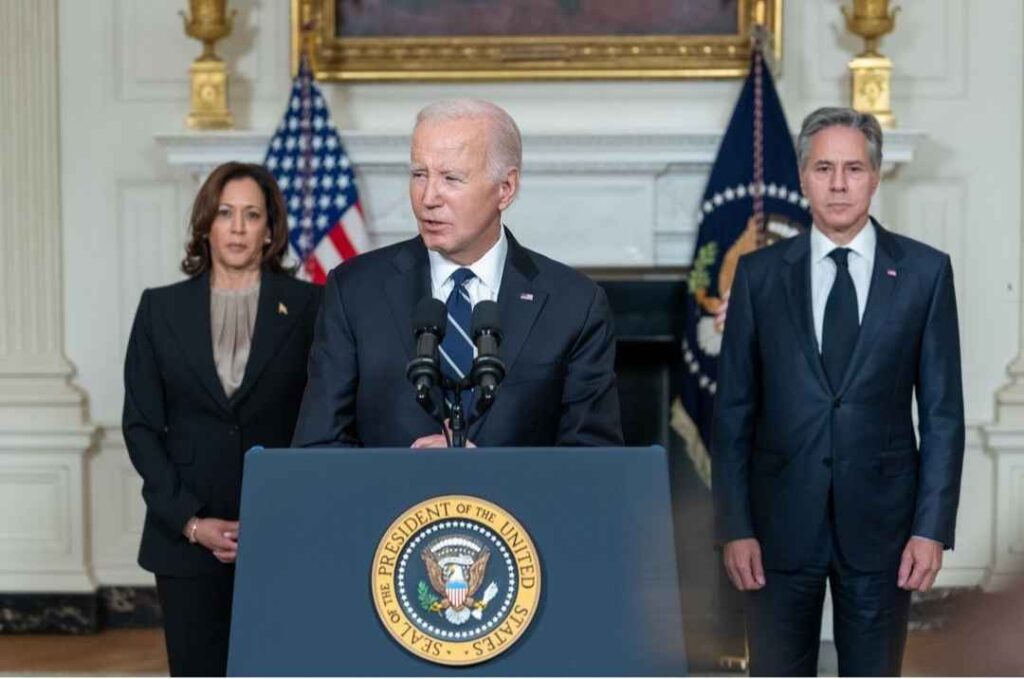Read about the dramatic U.S. military response to rising tensions in the Middle East. Discover the decisive action taken and the unfolding events in this high-stakes international showdown.

In a decisive move, the United States military executed targeted strikes against two facilities situated in eastern Syria. These facilities were identified as being used by Iran’s Islamic Revolutionary Guard Corps and allied groups.
The motivation behind these precision strikes was the escalating series of attacks on U.S. forces, which had occurred both in Iraq and Syria. This surge in attacks, which had taken place over the course of the past week, had raised concerns and prompted action from the U.S. government.
The decision to carry out these strikes was not taken lightly and was explicitly authorized by President Joe Biden. The primary objective of these military actions was to send a clear message, emphasizing the unacceptability of continued attacks against U.S. personnel. It was a response to the ongoing and mostly unsuccessful assaults launched by Iranian-backed militia groups starting on October 17.
Also Read:- UN Chief Antonio Guterres Drops Bombshell: Shocking Secrets Behind Israel-Hamas Conflict Revealed!
The strikes were carried out near Abu Kamal, a Syrian town close to the Iraq border, at approximately 4:30 a.m. on a Friday. This operation was executed with precision munitions, deployed by two F-16 fighter jets. The specific targets were weapons and munitions storage facilities. This strategy was intended to disrupt the capabilities of the groups responsible for the attacks on American forces in the region.
The United States has, on occasion, conducted retaliatory strikes against Iranian-backed forces in the area when they have targeted U.S. troops. An earlier example of this was in March when the U.S. military initiated multiple airstrikes in Syria against Iran-aligned groups, which were held responsible for a drone attack that resulted in the death of an American contractor.
In a demonstration of the seriousness of the situation, President Biden personally conveyed a message to Iranian Supreme Leader Ayatollah Ali Khamenei, warning Tehran against targeting U.S. personnel in the Middle East. This message underlined the U.S. government’s commitment to safeguarding the lives of its military personnel.
Also Read:- Tragedy Unfolds: Lewiston, Maine, Grapples with Mass Shooting – Updates on Suspect and Response
Currently, the United States maintains a presence of 900 troops in Syria and an additional 2,500 in neighboring Iraq. Their mission is to provide advice and assistance to local forces in an effort to prevent the resurgence of the Islamic State, which had captured substantial territory in both countries back in 2014 but was subsequently defeated.
The overarching concern is that the Israel-Hamas conflict could potentially spill over into the broader Middle East, putting U.S. troops at isolated bases in a precarious position. The U.S. government’s objective is clear: it expects Iran to take specific actions, including instructing its militias and proxies to stand down, to de-escalate the situation.
It’s noteworthy that the United States did not coordinate these recent strikes with Israel, and they acted independently. This underscores the gravity of the situation and the urgency of the U.S. response.
In another incident, a U.S. warship, off the coast of Yemen, successfully intercepted more than a dozen drones and four cruise missiles fired by Iranian-backed Houthi forces. Additionally, a civilian contractor tragically lost their life due to cardiac arrest during a false alarm at Al-Asad air base in Iraq.
To further bolster the security of its Middle East forces, the United States has deployed additional warships and fighter aircraft to the region in response to the Israel-Hamas conflict. This includes the deployment of two aircraft carriers and a substantial increase in troop numbers. These measures are designed to deter both Iran and Iran-backed groups and ensure the safety of American personnel in the region.
The U.S. military has also taken proactive measures to enhance the protection of its forces in the Middle East. This includes increased military patrols, restrictions on access to base facilities, and an expansion of intelligence gathering through methods such as drone and surveillance operations. These efforts are aimed at enhancing situational awareness and overall security for U.S. forces in a region where tensions remain high.
